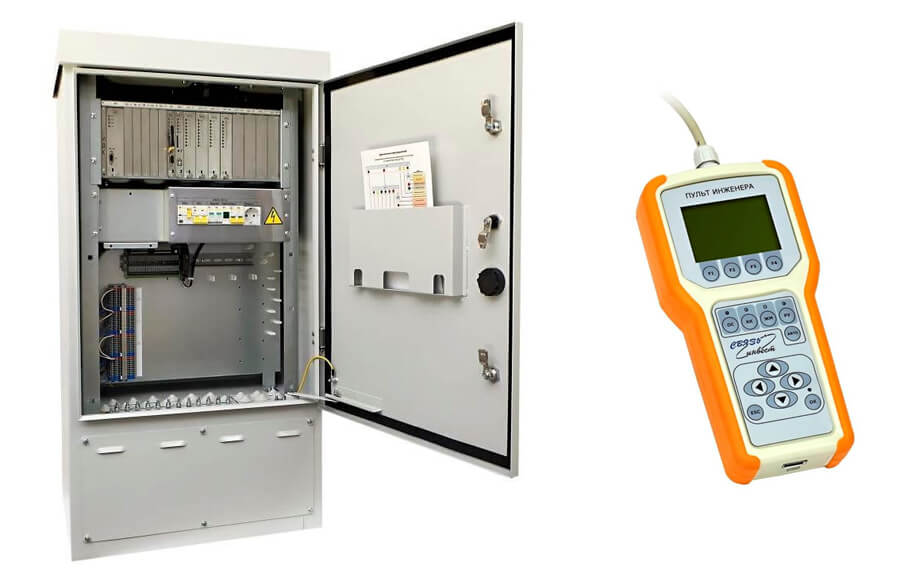ENSURING THE COORDINATION OF THE TRAFFIC LIGHT CONTROL SYSTEM FOR THE NON-STOP VEHICLE MOVEMENT ON CITY HIGHWAYS

Solution/project name: Ensuring the coordination of the traffic light control system for the non-stop movement of vehicles on city highways.
Solution/project type: Development, production and implementation of equipment and software for traffic management systems.
Developer: OJSC «Svyazinvest».
Scope of application: Traffic and Transportation.
Implementation effect:
Efficient transport and pedestrian flows management of the selected area of the city and the possibility of their prompt redistribution.
Solution/project status: completed projects:
Centerless organization of the "Green Wave" in Polotsk / Novopolotsk with the help of SIDK road controllers;
The first traffic light objects with vehicle detection using a radar detector bundle and SIDK road traffic controllers in the country in the area of Bogushevich square - K. Zetkin str.- Nemiga str., Minsk.
Description:
ROAD CONTROLLER SIDK

«SIDK» is a modern road controller that combines innovative ideas and reliability. On the one hand, it has an innovative design of European industrial equipment using the multiprocessing of powerful Cortex-M3 processors with a wide range of interfaces. On the other hand, it has a safety architecture that complies with European and local directives and standards. The software architecture opens up many application areas for the controller, and the wide range of supported traffic control algorithms allows the use of «SIDK» as a universal road controller that can be applied to many tasks. The presence of an extensive number of wired and wireless communication interfaces makes it possible to integrate the controller into a flexible network topology, and also allows it to be easily adapted to the rapidly changing world of modern telecommunications.
TECHNICAL ADVANTAGES:
- the number of regulated directions up to 32, with the possibility to choose a set of traffic signals;
- extended set of direction types, including bicycle direction, crossing traffic light control direction and beacon type information direction;
- phase-by-phase diagram control, as well as directional control;
- use, along with the "red all around" mode, additional safer options for the controller startup sequences;
- control of the minimum durations of each direction, and not just the phases;
- the ability to automatically build an intermediate cycle using transition intervals;
- customizable switching of programs taking into account holidays (including religious);
- the ability to switch programs based on the collected statistics on the intensity;
- use of the same phases, but with different durations within one cycle;
- centerless coordination, including the mode: master-slave;
- use of a simple language for flexible creation of conditions for the program control behavior.
DETECTION:
- the number of serviced sensors and detectors has been increased to 64;
- use of a large number of logical detectors types, including detectors: speed, occupancy, flow density, queue, etc.;
- the ability to use as vehicle detectors: induction (loop), infrared, radar, video and wireless detectors;
- use of the detector.
FLEXIBILITY:
- use of several Tprom tables of durations, with the ability to select a table for each of the possible transitions between phases;
- flexible distribution and adjustment of the number of power channels increased to 120;
- low minimum controlled current in each power channel up to 10-15 mA, allowing to connect and control LED load up to 3W;
- phase-by-phase diagram control, as well as directional control;
- the ability to synchronize clocks using GPS, NTP/SNTP servers;
- the ability to automatically determine the time of the nightfall for centralized correction of the traffic signals brightness;
- the ability to control the thermal control system inside the controller when using the controller in regions with harsh climate;
- the ability to use police control keys for the controller, including contactless (RFID);
- the ability to connect and control the road traffic controller via wired ATCS channels ("Signal", "Start"), Coordinated transport control system, Ethernet;
- the ability to connect and control the road traffic controller via wireless GSM, CDMA channels.
Awareness:
- formation of signals to inform pedestrians (wait, walk, etc.);
- formation of training signals for countdown timers, including objects with call phases, as well as signals for resetting timers;
- the ability to connect electricity meters, with the transmission of readings through communication channels;
- the ability to control the readings of speed indicators (USK);
- the most approximate software emulation of the controller;
- portable diagnostic console (engineer's console) for displaying the current state of the controller, reading diagnostic information on the graphic display screen, as well as for the manual control management;
- keeping a cyclic log of the controller's work (up to 1000 events).
